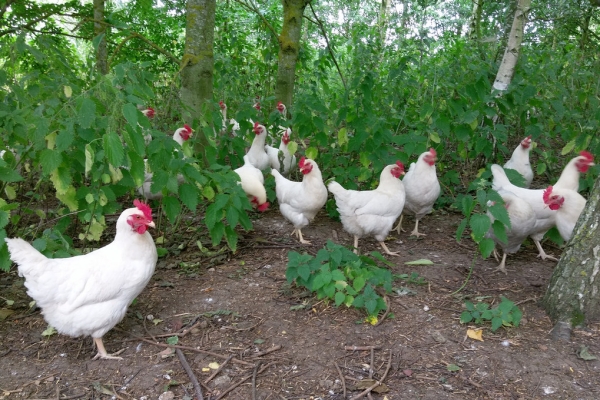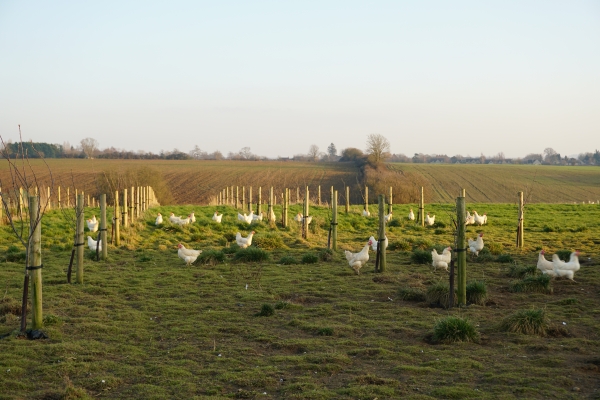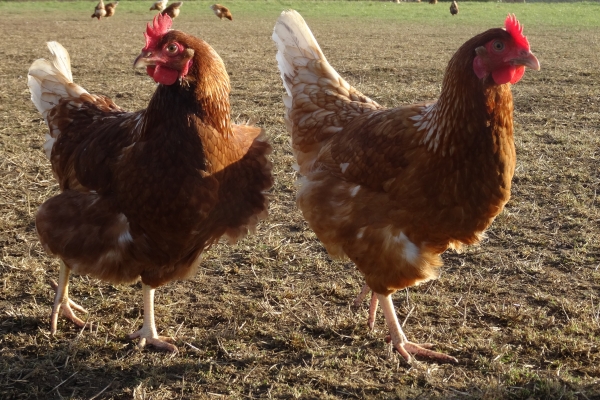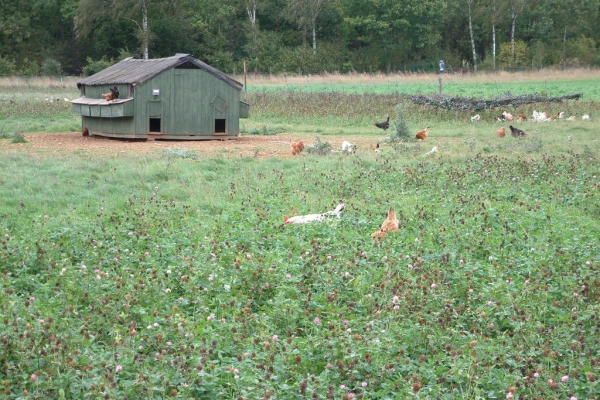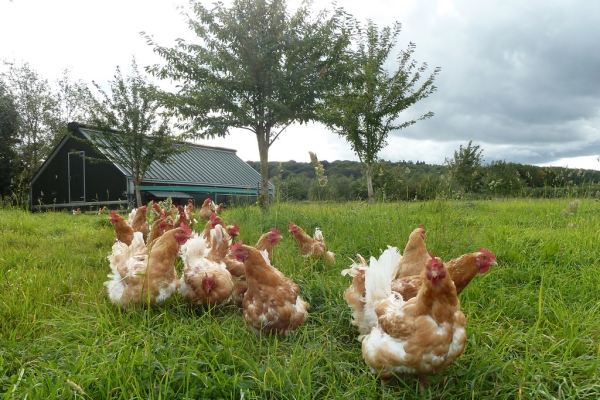A Woodland Trust guide to tree planting for free range poultry
Practical Guidance
Resource explained
Providing tree cover for free range chickens benefits the welfare of the birds and their performance. Meeting the Woodland Standard for poultry products, this practical guidance takes you step by step through the process of planting trees and establishing and maintaining woodland for free range poultry.
The guide covers initial layout and design and includes advice on practicalities such as site preparation, tree spacing and species selection, and how to encourage ranging.
Detailed practical information is provided on what, when and how to plant, the use of guards, design options (which are usefully illustrated), different planting methods (pit, slit and t-notch), and maintenance of planted areas. Maintenance covers weeding and the different practical information you will need through the years of maintaining the planted areas, along with recommendations for early and long term maintenance.
Findings & recommendations
- Encouraging ranging is important if the potential welfare benefits of the free range system are to be realised. One crucial benefit of ranging is a reduction in the risk of injurious feather pecking (IFP).
- Well designed tree planting around hen housing can encourage ranging and promote natural behaviours that are good for hen welfare.
- By drawing birds away from their housing, tree cover can help reduce nutrient load, parasitic contamination and poaching.
- Design, site preparation and choosing the right trees are all important things to consider before the trees are planted.
- Initial and long term maintenance such as using tree guards, weeding and thinning will keep trees manageable and maximise their potential.
- A well designed tree planting scheme which provides good canopy cover is the most practical and sustainable method to encourage hens outdoors, get them ranging further and provide opportunities for foraging behaviours.
- As a general rule, trees should only be planted on former arable land or improved grassland. If your land is under an existing agri-environment scheme, check that your planting falls within the conditions of the scheme. You may be eligible for a tree planting grant, this guide explains how you can check.



